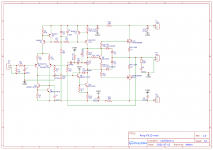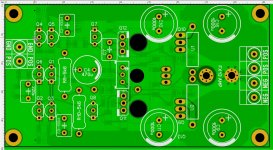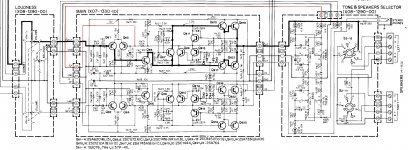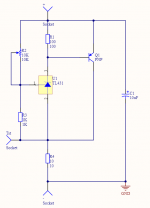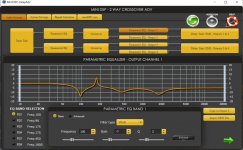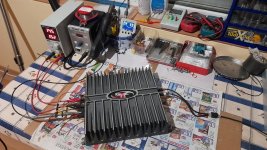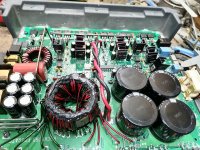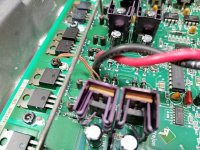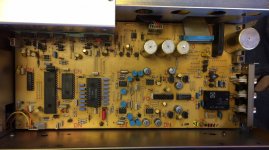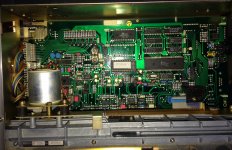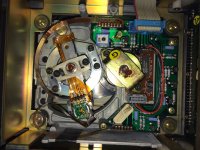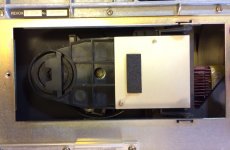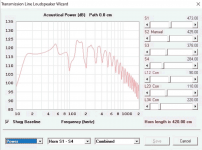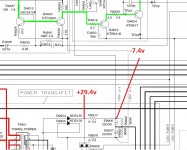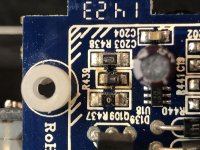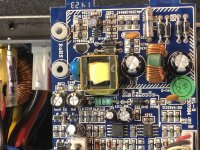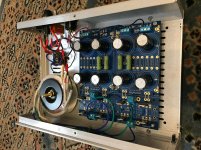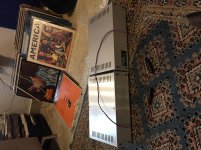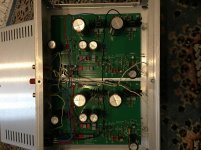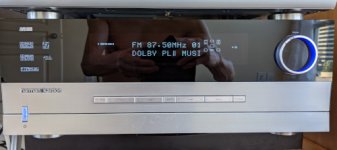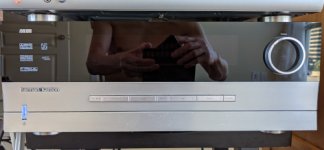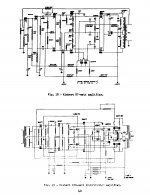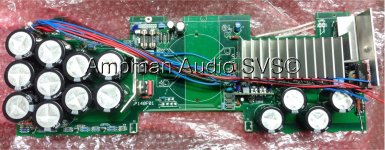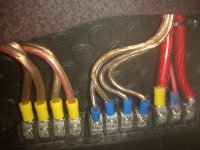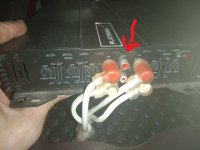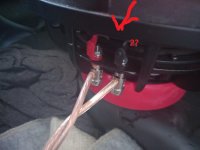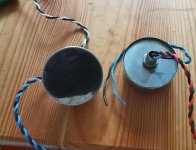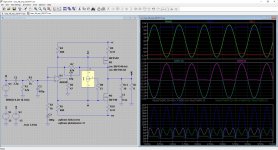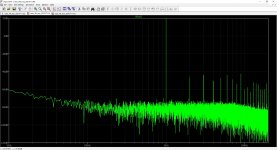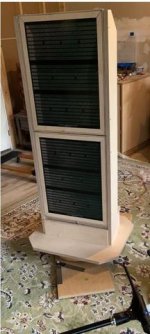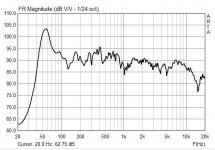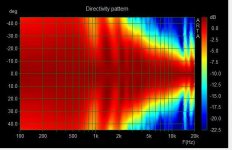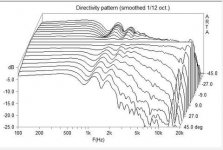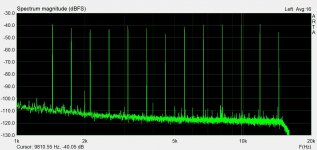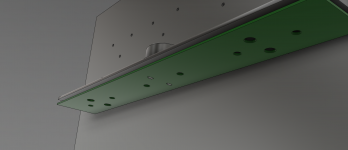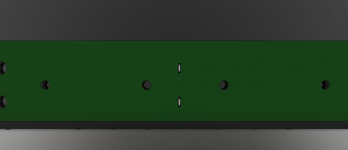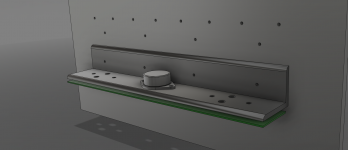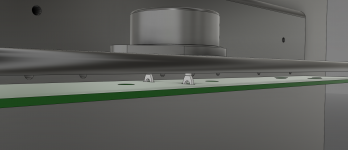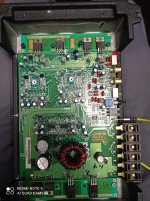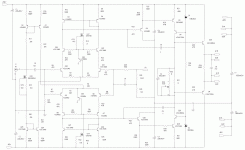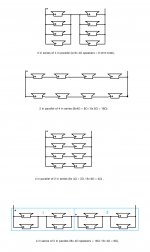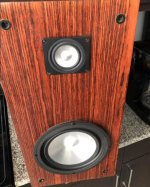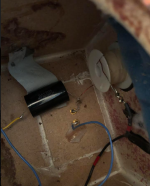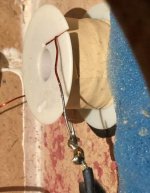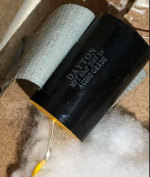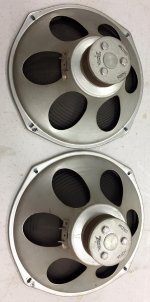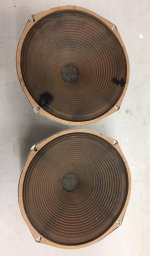M. V. Kiebert of Indianapolis Indiana
Not a name you here all the time.
https://www.pearl-hifi.com/06_Lit_Archive/02_PEARL_Arch/Vol_01/Sec_01/065_Dsgn_Fctrs_for_PwrAmps.pdf
In Particular is the very last amp on the page.
Designed for the BBC no less.
It's a 100 watt continuous amplifier using a quad of 300Bs
Into a FREED 18777 output transformer.
Sadly there are NO component figures given in Mr Kieberts schematic.
Now here's the part that gets me.
How can you get a 100 watts out of a quad of 300Bs?
In the paragraphs above the schematic he references a 200 watt short burst peak power.
I found this site after reading what our friend Lillenthal wrote about Kiebert here:
100 Amplifiers, part 2 , 1945 – 54 | Lilienthal Engineering
100 Amplifiers, part 2 , 1945 – 54 | Lilienthal Engineering
I'll paste his write up below,
Kiebert’s 45 W Williamson, 1954,
Very cool designer – top class circuits – one of the few at my top 5 list. Yet , Kiebert is as good as unknown in the DIY community as well as elsewhere…..This is sad in my opinion, because Kiebert was so much ahead of the others at the time and still to this day his circuits are way better than the 99%. I wonder why nobody discusses his circuits and why no one has copied or learned from these master class designs…?
Anyway – Kiebert was a hardcore Williamson fan. He did not use any of the values from the original circuit – he hardly used anything at all, except the circuit blocks. Kiebert was fast to spot the weaknesses in the components and feedback scheme of the Williamson, but also to recognise that the circuit itself was close to ideal. . When we look at the circuits of Kiebert we can actually sense that these are circuits of high technical insight and that they are very carefully designed. Nothing is random or made from what was at hand. Starting at the input, Kiebert uses a 100 k Ohm pot ! ..Now this is in the mid 1950’s and some 30-40 years ahead in time. So much better that the usual 0.5 to 1 M or more, that was common way up to relative recent.. Then he uses the 12AY7 instead of the usual 12AX7. This alone improves all merits of the amplifier, from noise to freq response. Then a 5687 as driver, which provides a lot of headroom, in fact oceans of such compared to 12AX7, 12AT7, 6SN7 etc. This is indeed very clever and again way ahead from the usual at that time, even compared to 90% of today’s driver topology. Kiebert always used 12AY7 as input and phase splitter, followed by a 5687 as the driver. This is a combination that I have learned to value and used from time to time myself. But Kiebert does not stop there. He really wants the power and juice out of that driver – hence the cathode follower…..same headroom 5687. And why not avoid the AC coupling, drive directly and bias at the same time…. [IMG]
Kiebert continues the tour de force and wants to hold that cathode follower tight by Voltage regulation from a 12BH7. Do also note the clever filament scheme, the use of swinging choke input, and two parallel 5V4/GZ34 for best possible regulation and soft start to prolong tube life. I wonder why he used the filter constants to bypass the plate resistor at the input and to the grids of the 5687. I am also a little puzzled by the 82 Ohm resistor at sg2 of the 807’s. Why not a 100 Ohm ? But then with Kiebert I just know there is a good reason and I won’t question this. I am amused by the weird way Kiebert draws his circuits. Don’t you just love these miles long resistors ? I have redrawn the circuit a little as it was kind of a mess….I spotted an error in the circuit while doing so, that I felt was amusing, hence I left it there….. Do you see it ?
I will give you a hint….Look at the PSU…..
Yup , Kiebert uses solid state to supply the negative bias. That is good engineering too….Have you found the mistake….?……These two solid state diodes are turned 180 degrees….The negative side faces to the AC instead of the bias…. He he…..
Sadly this model is a class B design, however all we need to do is to adjust it in to the class A area and we are all flying.
Apparently Kiebert fancied the 807’s as most of the designs I know from his hand uses these. He did make a 70 Watt 6146 PP and a 100 Watt 4 x 300B PP for BBC.
Kiebert took a few cool audio power amp patents in 1959 as well.
Kiebert you were a sleeper’t, but now you are a keeber’t……I hope that I have hereby printed your name into the history of audio technology.
Hats off to Kiebert.










